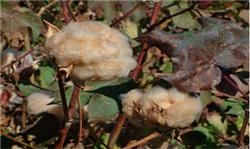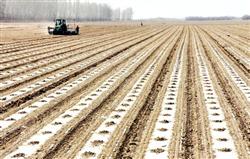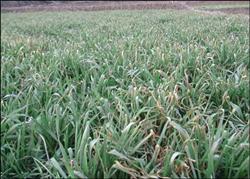When is the best time to accelerate the ripening of late cotton?

First, we should see that most of the cotton is sent late this year, which is at least half a month later than usual; second, it depends on what crops are planted in the following crops of cotton, such as wheat and rape, which can be interplanted in wide rows of cotton, and there is no need to adopt ripening technology to allow cotton to mature naturally. For example, the ripening technology can be used to plant vegetables and other crops with higher benefit in the following crop of cotton. The main drug used is plant growth regulator ethephon. The chemical name of ethephon is 2-chloroethyl phosphoric acid, commonly known as ripening agent. The principle of applying ethephon on cotton is that the cotton plant releases ethylene after absorbing ethephon, which increases the ethylene content in the cotton boll, enhances the activity of peroxidase, and destroys the synthesis of auxin, thus transforming the cotton boll to maturity. After the application of ethephon, the photosynthates in cotton leaves can be transported out in a short period of time, which can promote the weight gain of cotton bolls. General application of ethephon cotton, can be opened early 7 MUR 10 days. In order to give full play to the role of ethephon, the following points should be mastered in the operation technology: first, spraying time, normal years, from late September to early October, late hair of cotton this year, which can be postponed to early to mid-October; second, on the day of spraying, the highest temperature should reach more than 20 ℃, and if it is above 20 ℃ for several consecutive days, the effect will be better. Third, the boll period of about 80% of cotton plants should reach more than 40 days, and if the bolls are less than 40 days, the boll weight, lint percentage, and quality will be affected; fourth, the dosage per mu of cotton field is 40% ethephon 100ml 200ml, mixed with 50 kg of water, reducing when the temperature is high, and increasing when the temperature is low.
- Prev

Cotton sowing techniques in spring
According to the variety, soil fertility and planting mode to determine the density, reasonable close planting, to achieve one sowing the whole seedling. General single planting spring cotton varieties, the first mu density is about 3500 plants, row spacing 1 meter, plant spacing 19 cm; semi-spring varieties generally control about 4500 plants per mu, row spacing, plant spacing 15 cm; summer cotton varieties,.
- Next

Remedial measures for Spring Frost of Wheat
In February and March of every spring, cold air often breaks out to the south in the north, and the process of cooling is large, and the wheat jointing prematurely often suffers from freezing injury. At this time, for overgrown seedlings, repressive measures should be taken to restrain growth; the weak seedlings should be reasonably fertilized and turned strong to enhance their cold resistance, and at the same time, attention should be paid to listening to the sky.
Related
- The first cup of black tea in spring, the flavor and history of tea gardens in Kenya, Africa
- The computer can not only choose potatoes, but also grow tea rice. AI will grow winter oolong tea champion.
- It is not only the inflated tea bitten by insects, but also engraved with the four seasons tea in Beipu.
- The Oriental Beauty Tea Festival in Zhuxian County takes the stage at the weekend to experience the plus-size feast of oil tea.
- & quot; Oriental Beauty Tea & Exploration of Emei in Hsinchu, the hometown of quot;
- The new variety of strawberry "Tainong 1" dessert is the first choice with mellow aroma. Crimson gorgeous
- History of Tea in Taiwan: from Wild Inner Mountain to Export Tea Garden
- Two types of Taiwan Oriental Beauty Black Tea won the British three-Star Award for Childhood Tea Xiang Zhang Jiaqi changed from pilot to champion tea maker.
- Banana species and varieties: the planting history of Taiwan Xianren banana and dwarf banana is long, is banana disease resistant?
- Coffee planting Technology: Qianjie Coffee from Seedling to harvesting

